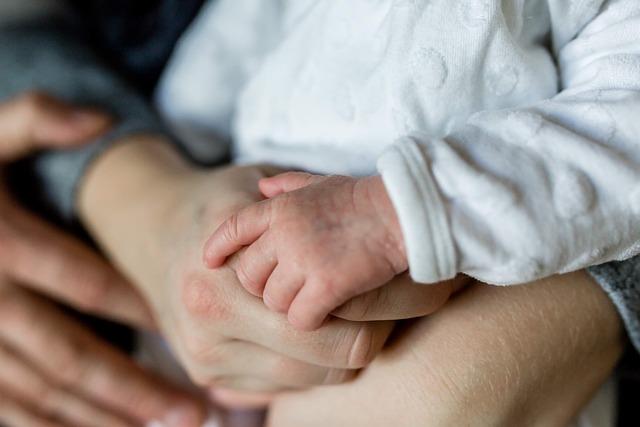In northern Syria, a region long scarred by conflict and displacement, the return of displaced homeowners to their properties marks a poignant chapter in the country’s ongoing humanitarian crisis.As families begin to navigate a landscape riddled with destruction, many are confronted with the stark reality of homes bereft of roofs, standing as hollow reminders of a life once lived. This article delves into the challenges faced by these returnees, examining the intersection of hope and despair in a region striving for recovery amid the remnants of war. Through the lens of personal stories and local efforts, we explore the complexities of rebuilding lives and communities in a setting still grappling with the aftermath of relentless violence and instability, as reported by The Associated Press.
Challenges Faced by Returnees in Roofless Homes
Returning to their homes in northern Syria often feels like seeking refuge in a ghost town, with many families confronting the harsh reality of living in roofless houses.These returnees are faced with numerous obstacles that hinder their ability to rebuild their lives. Some of the most pressing challenges include:
Lack of shelter: Without roofs, homes are unable to provide basic protection from the elements, leaving families exposed to harsh weather conditions.
Financial strain: Many returnees lack the resources to repair their homes, as they often lost everything during displacement and struggle to find employment.
Psychological toll: The trauma of displacement and the sight of destroyed homes can contribute to mental health issues,making recovery challenging.
Limited access to aid: Humanitarian assistance may be insufficient or slow to arrive,leaving families to fend for themselves.
The situation is exacerbated by the ongoing instability and lack of infrastructure in the region. Many families report a clash between hope and harsh reality, as they yearn for a sense of normalcy yet are met with daunting conditions. The voices of these returnees underlie a pressing need for coordinated international aid to address the rebuilding of communities and the provision of essential services. A snapshot of the critical needs of returnees is illustrated in the table below:
Need
Current Status
Shelter restoration
Severely lacking
Employment opportunities
Minimal availability
Health care access
Limited
Psychosocial support
Insufficient resources
The Humanitarian Crisis of Displaced Families in Northern Syria
The ongoing conflict in northern Syria has resulted in a dire humanitarian crisis affecting countless families who have been forced to flee their homes. now, as some displaced individuals attempt to return, they face the heartbreaking reality of their former lives being reduced to rubble. Homes once filled with warmth and memories now stand as stark reminders of the violence that erupted just beyond their walls.Many return to find their houses devoid of roofs, with essential infrastructure destroyed or dangerously deteriorated. The landscapes they once knew have transformed into desolate environments, where basic amenities are scarce and the remnants of conflict linger palpable in the air.
Many families are navigating various challenges upon their return. The needs of these displaced families are urgent and numerous, including:
Access to clean water: Essential for survival, yet frequently enough nonexistent in many areas.
Food security: With local markets devastated, families struggle to find reliable sources of nutrition.
Healthcare services: Access to medical care remains critically low and out of reach for many.
Psychosocial support: The trauma inflicted by displacement needs addressing to aid in recovery.
to better illustrate the scope of the situation, the table below outlines some key statistics:
Metric
Statistics
total displaced families
Approximately 1.5 million
Children affected
Over 600,000
Families without adequate shelter
34% in northern regions
Access to health facilities
Only 40% operational

Impact of Conflict on Residential Infrastructure and Community Stability
The aftermath of conflict in northern syria has left a profound mark on the residential landscape, transforming vibrant communities into shadowy reminders of their former selves. Many displaced families return to find their homes ravaged,with structural damage rendering their houses unlivable. The destruction often manifests in various forms:
Roofless homes: Many returnees discover that their houses have lost roofs, exposing them to the elements and making them uninhabitable.
Structural instability: Buildings that survived the initial rounds of conflict now suffer from crumbling walls and weakened foundations.
Lack of essential services: Basic infrastructure, such as water supply, electricity, and sanitation, has been severely disrupted, complicating the already arduous process of rebuilding.
This degradation of infrastructure not only disrupts daily life but also undermines community stability, fostering environments ripe for further tensions. The psychological impact on returning families is considerable; the loss of physical homes correlates strongly with a sense of disconnection from community ties and identity. In this very way, the barriers to reconstruction are not just logistical but deeply social, leading to issues such as:
Social Issues
Consequences
Decreased social cohesion
Heightened distrust among neighbors
Loss of community identity
Increased feelings of isolation
limited access to resources
Increased poverty rates

Efforts by NGOs and Local Governments to Restore Housing
In the wake of the devastation in northern Syria, numerous NGOs and local governments have mobilized to address the urgent housing crisis faced by returning displaced individuals. Organizations such as Habitat for Humanity and the International rescue Committee have been at the forefront of these efforts, collaborating with local authorities to provide essential resources for rebuilding homes.Their initiatives include:
Emergency Shelter Kits: Distributed to families whose homes were damaged or destroyed.
Tent Cities: Established to provide temporary housing for those in urgent need.
Community Workshops: Organized to empower local communities with skills for home repairs.
local governments, alongside these NGOs, have initiated reconstruction projects aimed at revitalizing neighborhoods. These collaborative efforts are crucial not only in restoring physical structures but also in rebuilding community trust and morale. Recent initiatives include:
Project Name
Location
Status
Roof Restoration Program
aleppo
Underway
safe Shelter Initiative
Idlib
Completed
Community Resilience Project
Raqqa
Planned

Future Prospects for Homeowners in War-Torn Regions
The return of homeowners to war-torn regions like northern Syria presents a complex web of challenges and prospects. As many displaced families step back into their former neighborhoods, they are greeted by the stark reality of their homes: roofs missing, infrastructure ravaged, and basic services almost non-existent. Rehabilitation will require considerable time and resources, both of which are frequently enough in short supply. Local, national, and international support mechanisms will be crucial in addressing immediate needs and laying the groundwork for sustainable rebuilding.
Moving forward, several factors will play a significant role in determining the future for homeowners in these areas:
Community Initiatives: Local grassroots organizations can definitely help streamline rebuilding efforts by providing resources and training.
International Aid: continued support from foreign governments and NGOs will be vital for reconstruction efforts.
Policy Reform: Changes in housing and property laws may be necessary to address ownership disputes and land rights.
Economic Recovery: Revitalization of local economies will encourage returning residents to invest in their properties.
Factor
Impact
Community Initiatives
Can foster local engagement and expedite rebuilding.
International Aid
Provides necessary funding and expertise for reconstruction.
Policy Reform
Ensures legal clarity and security for homeowners.
Economic Recovery
Encourages investment and stability for returning residents.

Recommendations for Effective Recovery and Support Initiatives
To address the urgent needs of displaced populations returning to their homes in northern Syria, it is essential to implement targeted recovery programs that prioritize both immediate assistance and long-term stability. Effective recovery initiatives should focus on the following key areas:
Emergency Shelter Support: Immediate provision of temporary housing solutions, including tents and emergency roofing materials, to ensure families have a safe place to stay while permanent repairs are underway.
Infrastructure Rehabilitation: Restoration of basic utilities such as water, electricity, and sanitation facilities to facilitate a safe and healthy living environment.
Community Engagement: Involve local residents in the planning and execution of recovery projects to foster ownership and increase efficacy in rebuilding efforts.
Psychosocial Support: Integrate mental health services into recovery programs to help individuals cope with trauma and rebuild their lives.
Additionally, collaboration with local NGOs and international organizations can amplify the effectiveness of support initiatives. A structured approach to funding and resource allocation is vital. Consider establishing a table for tracking support initiatives:
Initiative
Description
Status
Roofing Rehabilitation
Provision of roofs and construction materials for homes
Ongoing
Water Supply Restoration
Installation of water pumps and purification systems
Planned
Mental Health Workshops
Conducting community sessions for trauma recovery
In Progress
These combined efforts can considerably enhance the recovery process for returning families, ultimately contributing to a more resilient community capable of withstanding future challenges.

in summary
In the face of adversity, the plight of displaced homeowners in northern Syria highlights the complex realities of post-conflict recovery. As families return to their neighborhoods, they are met with the haunting remnants of destruction—houses stripped of roofs and structural integrity, emblematic of a struggle that extends far beyond physical rebuilding. The resilience demonstrated by these individuals speaks to a larger narrative of hope amid hardship, yet it underscores the urgent need for complete support and resources to address their critical living conditions. As the international community grapples with the challenges of reconstruction and humanitarian aid, the situation serves as a poignant reminder of the ongoing human cost of war and the imperative to prioritize the needs of those most affected. Amid the rubble, the stories of returnees remind us that the journey toward reclaiming a sense of home is just beginning—a journey that requires not only determination but also solidarity and assistance from the global community.
—-
Author : Asia-News
Publish date : 2025-02-20 00:58:49
Copyright for syndicated content belongs to the linked Source.